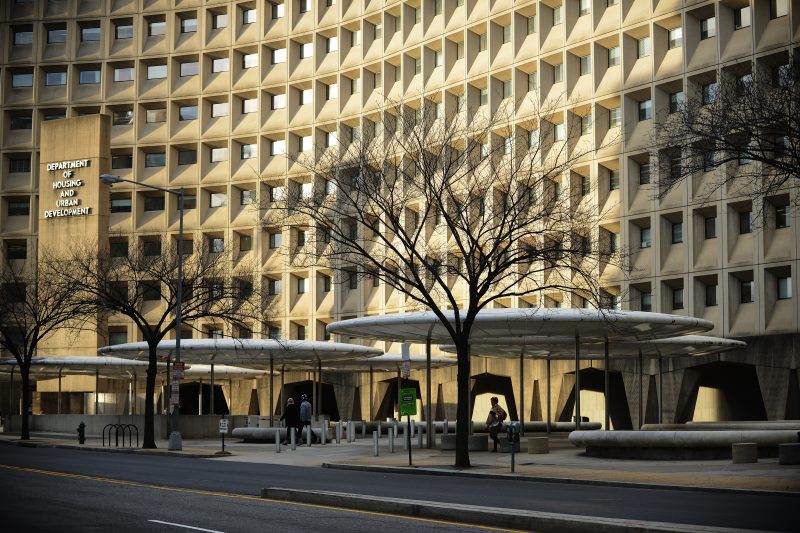With the threat of government default looming, the unions representing anxious federal workers have pressed the Biden administration for guidance on what a debt ceiling calamity might mean for their millions of members.
So far, the official answer has been consistent: We have nothing to tell you.
“‘We’re saying, ‘We don’t have a handle on this, and we need to get a handle on it,’” said Jefferson Friday, general counsel for the 100,000-member National Federation of Federal Employees, who was planning at a Zoom meeting Friday to bear down again on officials at the Office of Personnel Management. “They’re saying, ‘We don’t know anything.’ Or whatever they did know, they weren’t allowed to tell us.”
The 2.1 million employees who keep the vast federal government afloat find themselves in a precarious limbo as talks between the White House and House Republicans to raise the country’s borrowing limit approach a June 1 deadline, when the Treasury Department warns that the government might no longer be able to pay its bills. Bipartisan negotiations were proceeding Friday, but the White House and House Republicans hadn’t yet reached a final agreement to avert the crisis.
What happens if the U.S doesn’t raise the debt ceiling?
End of carousel
If a default happens, the government could halt many day-to-day operations, from staffing national parks at the start of tourist season to researching the newest coronavirus vaccines at the National Institutes of Health. Millions of federal contractors could go unpaid. Benefit checks for veterans and other disabled Americans may not go out.
And unlike a shutdown — an unpleasant but predictable stoppage that federal employees have become accustomed to weathering — no one knows how a default in Washington would actually play out.
The personnel agency and the Office of Management and Budget, which also oversees the federal workforce, did not respond to requests for comment. The White House has consistently signaled its confidence that a compromise will be reached with Republicans.
“We are committed to not having missed payments and raising the debt ceiling so that’s not a situation we face,” Treasury Secretary Janet L. Yellen said this week at a Wall Street Journal CEO Council event. “We’re not involved in planning for what happens if there’s a default.”
Meanwhile, federal employees are bombarding their union headquarters with daily emails about whether they’ll be forced to work without pay and if the value of their government-managed stock portfolios will plummet.
“I’m one of those that doesn’t have a savings account to fall back on,” said Josephine Jones, who retired from the Environmental Protection Agency and now works there part time doing clerical work for $16.10 an hour.
“To be honest with you, I’ve tried not to listen to this subject on the news,” Jones said Thursday, taking a walk on her lunch break in the courtyard of the Ronald Reagan Federal Building and International Trade Center. She’s in her 80s and lives in the District. “I’d rather wait and just find out if I’m going to be furloughed. This is really going to affect me.”
Privately, federal managers say they are trying to game out how their agencies would proceed in the face of a default — even without specific direction from the White House.
“It’s a voyage of exploration, but not in a good way,” said one senior budget official, speaking on the condition of anonymity because he is not authorized to discuss planning for a default. “It’s sailing off the end of the world to see if [a default] is really there.”
The official said he has received “nothing” from the White House budget office on any of these topics. “I don’t know where to go with this.”
The government has never defaulted on its debt, despite coming within hours of catastrophe in 2011, the last standoff between the parties over raising the country’s borrowing limit. While a failure to resolve the current impasse draws comparisons to a government shutdown, the scenarios are very different.
During a shutdown, shorthand for a lapse in appropriations, it’s at least clear whether any government functions will be funded since Congress has generally agreed on a budget for some agencies. A default, though, would leave Treasury to decide which bills it could pay, creating little certainly about, for example, whether the Smithsonian would stay open to visitors, the IRS would continue to process tax returns or inspectors with the EPA would be able to monitor air pollution.
“Totally uncharted and troubling waters,” said Max Stier, president and chief executive of the nonpartisan Partnership for Public Service. “Unlike a shutdown, there is no certainty about what will be funded and what won’t, and no track record.”
To buy time and conserve cash without new borrowing options, a burst of new tax revenue or quick opportunities to slow spending, Treasury has asked federal agencies if they have flexibility to put off some payments that are due before early June.
Some offices are retrieving plans they sent the OMB before the government entered a 35-day partial shutdown in December 2018, blueprints that lay out which employees would be directed to work and which would be furloughed. Agencies have received budgetary allocations for the current quarter of the fiscal year, allowing them to draw money to pay expenses as they arise, including employee salaries. But it’s possible that money would need to be used for other obligations.
It’s also possible that a short default could cause minimal disruption if it fell within the government’s biweekly pay periods. However, since federal paychecks reflect compensation for time already worked and are sent about a week later, the government might not be able to pay for work done before money runs out.
Among the biggest questions coursing through federal offices is whether furloughed employees would be paid later, as they are in government shutdowns caused by funding lapses.
After every shutdown, those who had to come to work have been guaranteed back pay — a practice lawmakers enshrined in law. But that law does not cover a debt default, which would leave it up to Congress to pass new legislation to ensure that federal employees are paid.
Relatively speaking, the payroll for the civilian workforce is not the biggest-ticket expense the Biden administration would have trouble paying in a default. Federal salaries and benefits, minus the military and the U.S. Postal Service, come to about $28 billion a month and $50 billion for contractors, according to the federal budget. That’s dwarfed by Social Security checks and Medicare payments, for example.
Still, Jack Lew, who was director of the White House budget office during the 2011 standoff, said federal employees are right to be worried about their paychecks.
Understanding the debt ceiling
1/4
End of carousel
“This is the kind of thing where you don’t have a track record because it’s always been avoided,” said Lew, who later served as President Barack Obama’s treasury secretary. “The thing I think people have to realize is, it’s not a neat and orderly, ‘You do this, and you don’t do that.’ The process by which checks are paid is not easy to micromanage.”
As the Obama administration approached default in 2011, there were more questions than plans, Lew said — about what operations could cease; what bills to pay and not pay, under what laws; and which functions of government to give priority. The answer “was clear as mud.”
Sen. Chris Van Hollen (D-Md.), whose constituents include tens of thousands of federal employees and contractors, said in an email to The Washington Post that “federal employees face a double jeopardy” with a debt default. “On top of the negative impacts all Americans will face from rising interest rates and a likely recession, they also are at risk of going without pay.”
Matthew Biggs, president of the International Federation of Professional & Technical Engineers, which has 90,000 members at the Defense Department and other agencies and aerospace contractors, said he is hearing more concerns from his members as June 1 looms, “and they’re more worried about a default than they were about a government shutdown.”
“Even if they reach a deal, it doesn’t mean their TSP won’t be depleted,” Biggs said, referring to the hit financial markets took that affected the government’s savings and investment plan for employees, known as the Thrift Savings Plan, even after a default was averted 12 years ago.
Keith Williams, an EPA contractor in IT with two young children who works in the Reagan building, said he’s saved just a month’s rent for a crisis. “If the EPA is not working, I don’t work,” he said Thursday.
The 2011 compromise to avoid a default resulted in a decade of spending cuts across the government, a scenario under consideration now as well, albeit for a shorter duration. That’s also making employees at some struggling agencies nervous. The Social Security Administration, for instance, is already reeling from eroding customer service coming out of the coronavirus pandemic, in part because thousands of employees quit or retired and not all of them have been replaced in the tight labor market.
“The agency is already in a public service crisis,” said Rich Couture, chief contract negotiator for the American Federation of Government Employees at Social Security, “and now we’re looking at some type of spending caps.”
At the Forest Service, wildland firefighters who recently received a temporary pay boost of $700 per paycheck through the end of the fiscal year on Sept. 30 are worried that any deal to avert a debt default could impede their efforts to make the raise permanent. The labor market is already causing applications for seasonal firefighting jobs to plunge across the government this year, said Warner Vanderheuel, a firefighter based in northern Michigan who is general vice president of the National Federation of Federal Employees’ Forest Service Council.
“It was really weighing on us how precarious the pay supplement is before this debt crisis,” he said.
Tony Romm contributed to this report.








